- Call us: 01444 237070
- Contact Us
- Stores
- Sign In / Register
- Black Friday Deals
-
- Back
- Used Cameras
- Used Accessories
- Used Lenses
- Used Video
- Used Film Equipment
- Used Stock Alert
- Used Blank Test
- Sell or Part Exchange
- All Used Black Friday Deals
- Used Clearance
- Recently Added Used Equipment
- Park Picks
- Faulty
- Trade-In
- Blog
- New in
- Call us
- Contact us
- Stores
- Sign in
- Categories
- Tips & Inspiration
- Reviews
- News
- Events
- Features
- Buying Guides
- Competitions
Best Astronomy Tools and Photography Gear
Observing the night sky is a wonderful way to spend an evening, whilst learning how to photograph the moon, planets and stars is the icing on the cake for many photography enthusiasts.
- The best time to photograph the night sky
- How to choose the best telescope for astronomy
- What are the best binoculars for astronomy?
- Best camera for astrophotography
- Best lenses for astrophotography
- Tripods for astrophotography
- Astronomy photography tips and guides
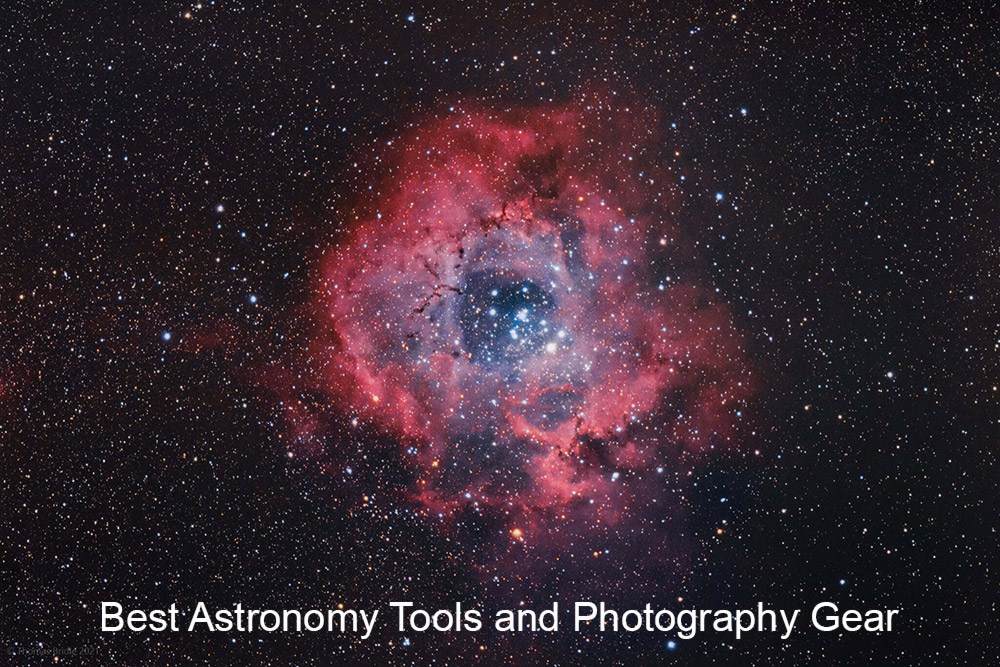
Whether you’re a beginner, seasoned astronomer or perhaps looking for astronomy gifts, our guide updated for Spring 2025 highlights the best astronomy tools and photography gear for any budget. Discover which are the best astronomy binoculars, how to choose a Celestron astronomy telescope and everything you need to know about using cameras, tripods and other equipment.
Our tips will help you deepen your knowledge of astronomy, discover new astrophotography tips from pro photographers and learn how to choose the best gear for viewing the night sky. You’ll also find out about key astro seasons in order to plan your viewing calendar at any time of the year.
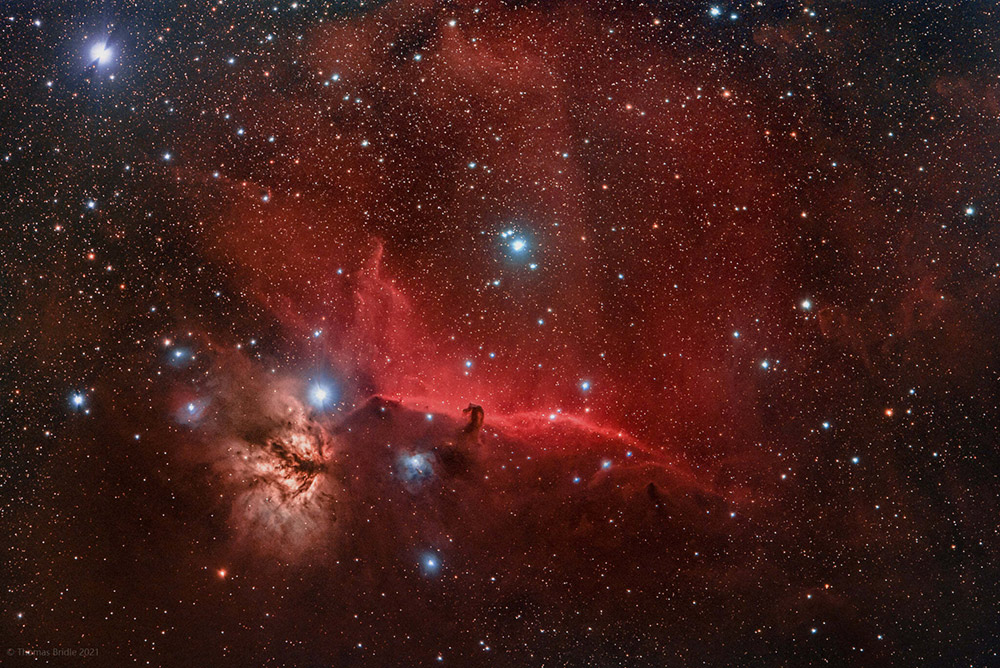
Horse Head and Flame Nebula ©Tom Bridle
The best time to photograph the night sky
Although it’s not always feasible to shoot at the perfect time, ideally night photographers will plan ahead for viewing stars and constellations, in order to have the best chance of capturing amazing images or witnessing the most impressive spectacles. This applies to anything from milky way and star photography, to moon photography and simply for viewing the night sky with your telescope or binoculars.
If you’re viewing and shooting planets, stars, nebulae, galaxies and other distant objects it’s best done when the sky is at its darkest. Choose a dark location with minimal light pollution during times of no moonlight or twilight.
This dark sky calendar will help you plan for these times for the best chance of witnessing objects at their brightest. An eyepiece like either of the Pentax Eyepiece SMC XW 23 or Eyepiece SMC XW 16.5 can provide impressive performance for very distant objects and make a worthy addition to your astro kit.
The annual calendar is divided into four astronomy seasons, with two solstices and two equinoxes spanning:
- Spring officially commences with the arrival of the Vernal Equinox, typically occurring around the 20th March
- Summer takes its throne on the Summer Solstice, which typically falls around the 21st of June.
- Autumn officially begins with the Autumn Equinox, which usually arrives around the 23rd of September.
- Winter is established on the Winter Solstice, typically taking place near the 22nd of December.
Prepare for your astro viewing and night photography by using the Royal Museum’s astronomy planner and plan your trips, compositions, or when to set up your Walkstool Comfort chair to observe any celestial spectacles.
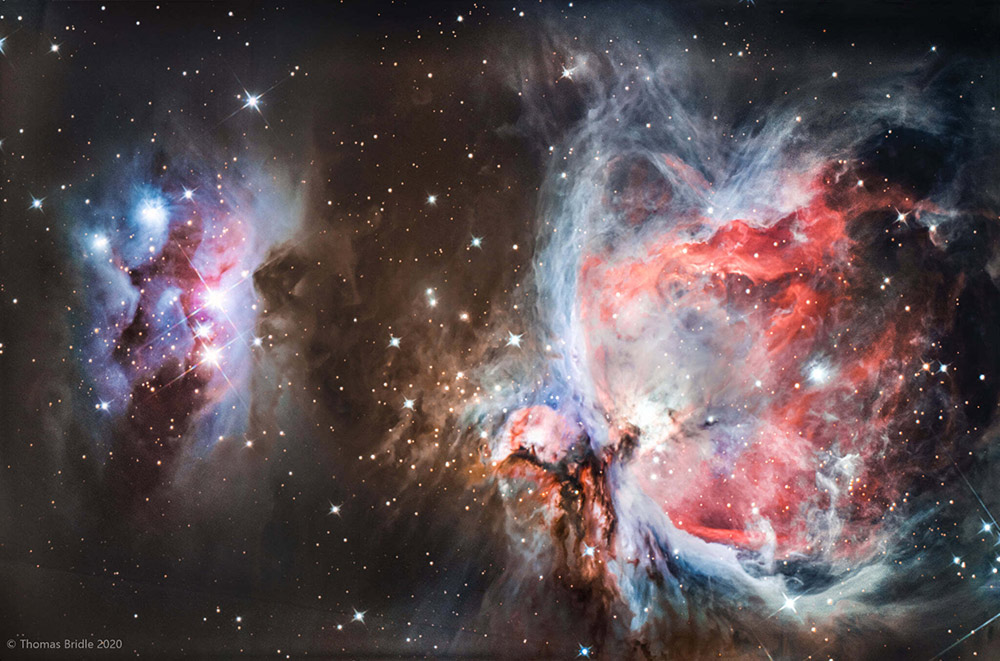
Running Man and Orion Nebula ©Tom Bridle
How to choose the best telescope for astronomy in 2025?
When choosing the best telescope for astronomy, look for large diameter and high magnification telescopes to view greater detail with higher definition. The Celestron NexStar 8SE Computerised Telescope is one of the most popular models for enthusiasts, with 102mm aperture and StarPointer™ red dot finderscope, for simple and detailed viewing.
If you’re on a tighter budget, looking for a beginner astronomy telescope or a gift, consider either the Celestron NexStar 5SE Computerised Telescope (£999.00) and DWARF II Smart Telescope Deluxe Bundle (£479.00) Despite costing considerably less than the flagship 8SE, you’ll able to view deep sky objects, Galaxy and Nebula and geographic features on the surface of the Moon with the DWARF 3 Smart Telescope.
Adding the Celestron StarSense AutoAlign to Celestron telescopes will automatically align on numerous stars in 3 minutes or less, for stress-free object location, while the Vaonis Hestia Smartphone Based Telescope Solar Pack enables you to capture the depths of the Universe — without complex setups or extensive knowledge of astronomy.
For 2025 we introduced several new models from the Sky-Watcher brand, including the Sky-Watcher Explorer 130P AZ Go-2 WiFi Parabolic Newtonian Telescope and AZ3 Alt-Azimuth Mount, which allows movement along two axes. Other new additions for 2025 include the unbelievably compact ZWO Seestar S50 All-In-One Smart Telescope, which is capable of professional results, whilst being exceptionally portable. Lastly astronomy fans can opt for the Celestron Origin Intelligent Home Observatory, which takes the complexity out of traditional telescopes, showing views of faint, deep-sky celestial objects on your smartphone without the usual know-how required.
Once you’ve picked the best telescope for your needs, you’ll be able to add accessories which expand the functionality of your telescope. The Celestron Eyepiece and Filter Kit 1.25-inch reveals previously unseen details on the moon and most popular planets, while adding a Celestron NexYZ 3-Axis universal smartphone adapter lets you capture images from your phone.
You can enjoy longer viewing times with your telescope when out in the field with the Celestron PowerTank Lithium portable power pack. Despite weighing only 1kg, this compact battery pack will power your telescope for up to 10 hours.
New telescope brands at Park Cameras
In 2025 Park Cameras added new models from ZWO, a popular brand of Smart telescopes from China. Previously, we were thrilled to announce back in 2023 that Sky-Watcher Brand Joined Park Cameras, adding to our range of options for celestial fans. These include the Sky-Watcher Star Adventurer GTi Mount and Tripod, which costs just £435.00 during our special offer, yet provides easy Go-To camera control via the App to explore 10,000+ Objects in the night sky. When adding the Sky-Watcher Star Adventurer GTi Mount Head you can attach your camera with a wide or telephoto lens and head straight to your preferred object.
Another option is the Sky-Watcher SkyMax 102 AZ-Go2 WiFi Maksutov-Cassegrain Telescope, which is a great beginners telescope, which features its own built-in WiFi module allowing the mount to be used virtually anywhere.
Unistellar is another newer brand with the state-of-the-art Unistellar EQuinox 2 Smart Telescope, which offers 100% app-controlled functionality. It also features vision technology to enjoy vibrant colours throughout the galaxy, such as Jupiter's great red spot, and details of galaxies and nebulae. At just 9kg you can stow it in the Unistellar Telescope Backpack and take the Equinox 2 to dark sky locations for the clearest views.

Andromeda galaxy ©Tom Bridle
What are the best binoculars for astronomy?
Knowing what to look for in astronomy binoculars is essential for the most enjoyable viewing, with the best models combining a wide field of view with high magnification. The best binoculars for astronomy will feature an aperture from 32mm to 60mm and a magnification of around 7x to 12x.
Mounting your binoculars onto a suitable tripod will give the steadiest results, although the Canon 14x32 IS Binoculars and premium Zeiss 20x60 Image Stabilised Binocular include image stabilisation for sharp images when handholding.
We added Nikon Monarch HG 10x42 Binoculars to the list on 2024 as they have garnered a reputation as one of the best binocular for successful observation of anything from birdwatching and wildlife to planets in the night sky, and likewise the Prostaff P3 8x42 Binoculars also from Nikon are a great option.
The budget-friendly Hawke Endurance ED 12x50 Binoculars Green make a great gift or first choice for a budding astronomer, while the ZEISS Conquest HDX 10x42 Binoculars offer yet more features at the other end of the spectrum.
A firm favourite amongst more experienced astro viewers and night photographers aare the Leica TRINOVID 10x42 HD Binocular and Leica NOCTIVID 8x42 Binocular, which offer a combination of portability, high magnification and incredible clarity. These binoculars come with SCHOTT HT glass, refined ergonomics and are waterproof to 5m to survive virtually any damp situation. Lastly at under £130 the Opticron Adventurer II WP PC 10x50 Binoculars demand attention as a truly budget-friendly option for all types of observation, including astro.
Although telescopes offer greater magnification than binoculars, many astronomers prefer the natural dual eyepieces, portability and versatility which binoculars provide. You can bring them anywhere in a backpack or even in your pocket and use them during downpours and in humid locations.
Our resident astrophotographer Tom has this to say ‘Binoculars with a high magnification are good for viewing the Moon. A tripod mount is recommended for creating a more stable viewing platform, while image stabilisation is excellent if you have the budget available. For stars, nebulae and distant objects choose a minimum 42mm aperture, while a larger objective is better for fainter objects’.
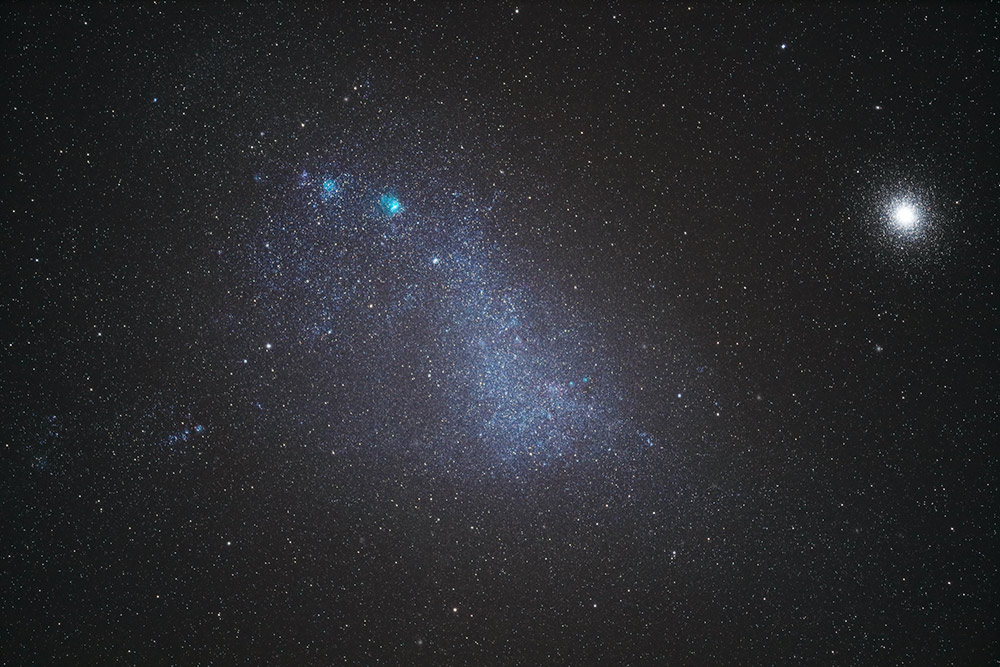
Best camera for astrophotography *updated for 2025
Choosing the best camera for astrophotography comes down to image quality, budget and whether you want to shoot deep-sky astrophotography with the camera attached to a telescope. A DSLR or mirrorless camera are the most versatile choice, while a smartphone is of course most accessible. We’ve updated our best buy cameras for astronomy in November 2023, with the latest digital cameras, which are capable of capturing stunning night shots.
A full-frame camera with good low light performance is ideal for wide field of view scenes, where both the foreground and night sky are in view. Full-frame sensors tend to offer better ISO performance over crop sensor or MFT cameras, although the gap is closing with newer models. For more detail our guide to Camera Sensor Sizes Explained highlights the strengths of each system and how sensors gather light, and the implications on the final image.
Virtually any full-frame camera on the market today will be more than capable of capturing great night images, however we’ve selected these models for their tried-and-tested astro capabilities.
|
Full-frame camera |
RRP |
Megapixels |
Max. Native ISO |
|
£4,499.00 |
45 |
51,200 |
|
|
£1,699.00 |
24.2 |
102,400 |
|
|
£2038.00 |
33 |
51,000 |
|
|
£1,999.00 |
24 |
51,200 |
|
|
£1,339.00 |
26.2 |
40,000 |
|
|
£2,999.00 |
45 |
25,600 |
|
|
£2,699.00 |
24.5 |
64,000 |
|
|
£3,699.00 |
61 |
32,000 |
|
|
£1,499.00 |
24.2 |
51,200 |
The biggest downside to full-frame cameras when compared to crop sensor and micro four thirds cameras is the weight of compatible lenses and overall portability. When capturing deep-sky images through a telescope a smaller sensor will also give a higher perceived magnification, with around 1.5x or 2x crop factor. The following smaller sensor cameras all offer great low light capabilities for astro.
|
Small sensor camera |
RRP |
Megapixels |
Max. Native ISO |
|
£1,699.00 |
40.2 |
12,800 |
|
|
£1,699.00 |
20.4 and 50MP tripod high res mode |
25,600 |
|
|
£2,199.00 |
20.37 and 80MP tripod high res mode |
25,600 |
|
|
£1,349.00 |
32.5 |
32,000 |
Whichever you choose, remember to budget for a suitable lens. Choose the widest maximum aperture lens possible to allow more light to enter, whilst reducing exposure times. A longer exposure at night will show stars streaked or with ‘trails’, rather than small sharp dots.
Best lenses for astrophotography
On the whole photographers will use an ultra wide angle lens, with the widest possible aperture to capture astro shots, when showing wide sweeping vistas of the night sky. A wider (or faster) aperture allows the lens to gather more light, which is complemented by high ISO capabilities of the cameras listed previously.
Our picks for best lenses for astrophotography include the following.
Canon RF and EF mount
- Canon recently launched the Canon RF 10-20mm F/4 L IS STM Lens, which features a slightly slower aperture, which it makes up for with a rectilinear design, robust build and pin sharp results.
- The Canon RF 15-35mm F2.8L IS USM is another strong zoom option for EOS R cameras, which features a classic focal range, bright f/2.8 aperture and L series quality.
- Another mirrorless option is the Canon RF 24mm f/1.8 Macro IS STM Lens, which is wide enough for classic astrophotography and combines all of the best attributes needed for brilliant night sky pictures.
- Canon has a brilliantly affordable compact prime RF 16mm F/2.8 STM Lens, which is well suited to this type of photography thanks to being compact, lightweight and delivering great images from the aspherical lens element.
- If you enjoy third party lenses for your DSLR, the Sigma 14-24mm F/2.8 DG HSM Art Lens Canon EF has been around a while and offers tried-and-tested results for classic night photography.
- Lastly, a Samyang XP lens is available in EF mount, with the Samyang XP 14mm F/2.4 Super Wide Angle Lens Canon EF being a solid prime choice for this endeavour.
Sony E
- Sony FE 12-24mm F/2.8 GM Ultra Wide Angle Zoom Lens, with a classic focal width and bright f/2.8 constant aperture this is the king of ultra wide zooms for the Sony mirrorless system.
- Another own brand Sony FE 24mm f/1.4 GM Lens provides exceptional performance from a wide aperture and compact design, well suited to astro.
- Also for Sony we have the Sigma 14mm f/1.4 DG DN Art Lens for Sony E, which offers the world’s brightest aperture at this focal width. This could well be the last word if you need the best lens for E-mount astro, without the option to zoom.
- The Tamron 17-28mm f/2.8 Di III RXD Lens Sony FE provides a bright aperture, versatile zoom range and excellent portability while out looking for dark skies.
- The Tamron 20mm F/2.8 DI III OSD Lens isn’t quite as wide as Sigma’s prime, but offers a great combination of price, compact size and robust build for night escapades.
- The Sigma 150-600mm F/5-6.3 DG DN OS Sports Lens For Sony E is a good option for capturing detailed images of the moon and other close celestial objects.
- While it may not initially appear like a lens suited to astro, the Tamron 35-150mm f/2-2.8 Di III VXD Lens for Sony E is versatile enough to capture celestial objects at 35mm thanks to the f/2 aperture and MF feature.
Nikon Z and F mount
- Nikon has made some incredible mirrorless lenses, including the Nikon Z Mount 17-28mm f/2.8, which combines a versatile zoom range with a bright constant aperture, begging to capture stars and dark skies.
- The Nikkor Z 14-24mm f/2.8 S is an even more practical zoom for astro, although it comes at a price compared to the previous option. This Z lens combines a bright f/2.8 aperture with legendary optics for razor sharp stars and space objects.
- It’s been around for years and is still the best zoom for astro with a Nikon DSLR, the Nikon AF-S Nikkor 14-24mm F/2.8G ED needs no introduction, having proven itself over many years.
- Another F-mount option is the Samyang XP 14mm F/2.4 Ultra Wide Angle Prime Lens Nikon F, which includes a bright aperture value and high-quality optical design for demanding low light photography.
- The Laowa 10mm f/2.8 Zero-D FF Lens for Nikon Z is an ultra wide for astro, which has zero distortion.
- The Tamron 35-150mm F/2-2.8 Di III VXD Lens For Nikon Z-Mount is versatile enough to capture celestial objects at the wide end, thanks to the bright f/2 aperture and manual focus ring.
Fujifilm X mount
- For premium sharpness and a wide aperture try the Fujifilm XF 8-16mm F/2.8 R LM WR X Mount Lens, which reduces distortion while rendering high quality details.
- The Tamron 11-20mm F/2.8 Di III-A RXD Lens For Fujifilm X offers a full-frame equivalent 16.5-30mm, which is perfect for night photographers who want to capture more of the scene in the frame.
L mount
- The Panasonic Lumix 20-60mm F3.5-5.6 L-Mount Lens features an expansive 20mm focal width, providing L-mount photographers with a versatile option for capturing subjects that range from astrophotography to various many other scenes, all within the convenience of a single zoom lens.
- We mentioned the Sigma 14mm F1.4 DG DN I Art L Mount earlier, which is also available for full-frame Leica L cameras, combining a wide prime focus width with an extremely bright aperture.
- The Laowa 10mm f/2.8 Zero-D FF Lens for L Mount is a full frame rectilinear lens with zero distortion, perfect for astro photography.
- Sigma 14-24mm f/2.8 DG DN Art L-Mount is another winning combination of ultra wide zoom range and relatively bright aperture for astrophotography.
MFT mount
- The Olympus 100-400mm f/5-6.3 ED M.ZUIKO Lens Black is a stellar option for moon photography, thanks to the 800mm equivalent full-frame focal range.
Quick tips for getting sharp astro results
Whichever camera and lens you use, to capture pin-sharp astrophotography follow these key steps:
- Use a Sturdy Tripod: Stability is crucial. A solid tripod minimises vibrations and ensures sharpness.
- Manual Focus: Disable autofocus and manually focus on a bright star or use live view for precise focusing.
- High ISO Setting: Increase your camera's ISO to make stars more visible but avoid excessive noise.
- Long Exposure: Employ long exposure times (15-30 seconds) to gather ample light.
- Reduce Light Pollution: Shoot in dark-sky areas to minimise light pollution.
- Image Stacking: Combine multiple shots to reduce noise and enhance detail.
- Remote Shutter Release: Use a remote shutter release or a timer to avoid camera shake.
- Test and Experiment: Experiment with settings, exposure times, and compositions to achieve the best results. For example, you might want to show star trails, or you might want a faster shutter speed to eliminate minor trails.
- Post-Processing: Refine your images in post-processing to enhance sharpness, contrast, and colour.
By following these guidelines and continually experimenting, you can achieve stunning pin-sharp astrophotography images with your gear.

Tripods for astrophotography
It is possible to capture sharp handheld images of the moon and night sky, however for the most consistent sharp results it’s recommended to use a sturdy tripod. Choosing the most suitable depends on whether you hike further afield, in which case a lightweight travel tripod is the best solution.
A more stable platform is preferable if you stay nearer home or hike shorter distances, as it reduces the risk of camera shake. Our top tripods for astrophotography include:
- The Benro Mammoth Tripod With WH15 Head Kit is an all-in-one legs and head solution, which as the name suggests offers sturdy and reliable support for heavier loads of up to 15kg.
- For additional portability try the Gitzo GT1532 Mountaineer Series 1 3-Section Carbon Tripod, which offers 20kg payload and lightweight portability, without sacrificing rigidity
- Lastly, the Gitzo GT5533S Systematic Series 5 3-Section Carbon Tripod weighs just just 2.63 Kg, but supports up to 42kg for heavy cameras, bulky heads and large ultra wide lenses.
- Benro Polaris Astro 3-Axis Head– although this head requires tripod legs, it is the world's first Tripod Head with an app controllable interface, for astro, timelapse and tracking. This enables you to set up your gear then control your camera from the camp fire!
- One of the best travel tripods you can buy is from Peak Design, which is available as the Aluminium Travel Tripod or the lighter Peak Design Travel Tripod Carbon Fibre. The carbon version weighs just 1.29 kg although it comes at a higher price, compared to the aluminium version, which weighs a very reasonable 2kg.

Rosette Nebula ©Tom Bridle
Best Camera bags for night photography
After gathering all your equipment, the next essential is a camera backpack to transport everything to your chosen starry location. We've narrowed down the selection to three top camera bags, which are adaptable enough for this purpose:
- The Lowepro Pro Trekker BP 650 AW II is big and burly, holds 43 litres of equipment and got a huge thumbs up in our recent Lowepro Pro Trekker BP 650 AW II review.
- Alternately, the Lowepro Lens Trekker 600 AW III is a great option for long lens photography when capturing shots of the moon and other celestial objects with a telephoto lens.
- Sticking with Lowepro, and the ProTactic BP 450 AW II Green Line Backpack Black ticks all the boxes as a rugged pack with pro-level protection, which is also eco-friendly, in line with Lowepro’s sustainable goals.
Astronomy photography tips and guides
At Park Cameras we’re passionate about all type of photography and connect with professionals in order for them pass on tips and inspiration for anyone starting out in their field. We’ve got plenty of astronomy photography tips and photography buying guides, packed with useful information for capturing epic night sky photos.
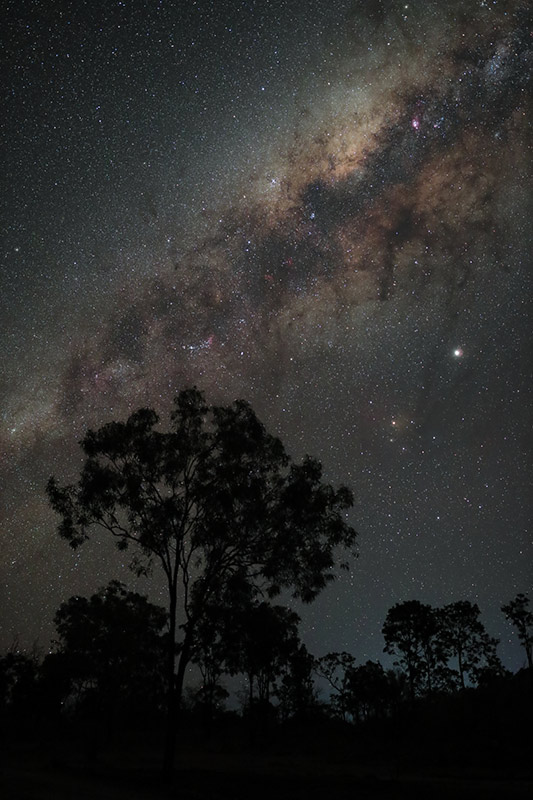
Astronomy photography for beginners
Commercial photographer Andrew Whyte shares tips on camera settings and the best equipment to help anyone embarking on this fabulous hobby. Discover how to prepare for astro photography, learn all about focusing, which ISOs to use and plenty of advice for getting started with astro photography and astronomy for beginners.
Moon photography
One of the best ways to immerse yourself and capture amazing astro shots is to begin by photographing the moon. This can mean learning how to photograph the supermoon and how to capture the lunar eclipse, depending on the phase of the moon, although it’s a great subject most cycles.
Photographing Jupiter and Saturn
There’s nothing quite like Jupiter and Saturn when it comes recognisable planets. They can be located with the naked eye and photographed with or without a telescope. Learn precisely which astronomy gear to photograph Jupiter and Saturn you’ll need, along with tips on the best accessories in our post.
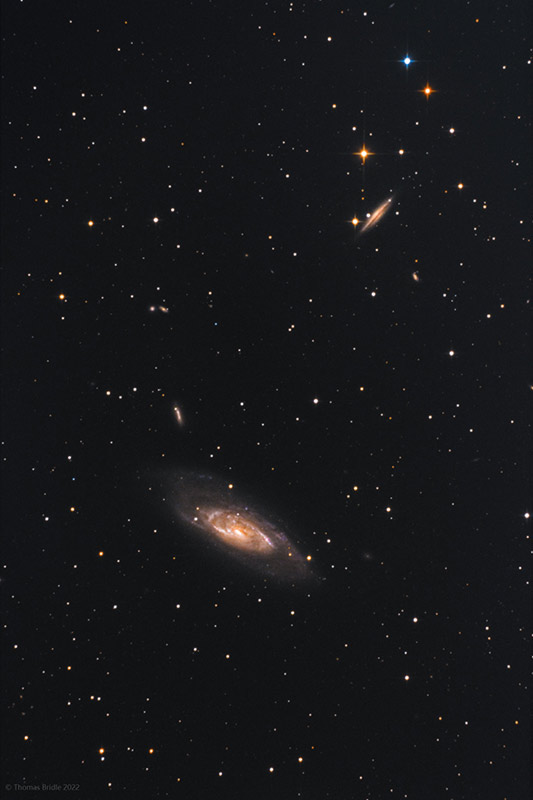
M106 and NGC 4217 Galaxies ©Tom Bridle
Now that you have a better insight into astro viewing and photography, browse our huge range of astronomy telescopes and accessories to get started viewing and photographing celestial objects and phenomena. Choose from our wide range of high magnification binoculars from every leading manufacturer, as well as digital cameras to capture the perfect shot of the night sky.
Share this post:
By Nick Dautlich on 03/02/2025
Nick Dautlich
Senior Content Writer and Product Reviewer
Nick Dautlich is the Senior Content Writer and Product Reviewer at Park Cameras, with over 15 years of photography experience. A Sony Imaging Professional and expert reviewer, Nick has worked with major brands such as Canon, Sony and Nikon. His work is also featured on Vanguard World UK’s website, Capture Landscapes, and Shutter Evolve. Nick’s photography includes National Trust projects and magazine covers and he is passionate about landscapes and storytelling. Nick also enjoys hiking and teaching his children about nature. Learn more on his profile page.

Trade in your old equipment
Fast and easy trade in service ensures your old gear is collected efficiently and you are paid quickly! It's very simple to trade in your unwanted photography gear. Just head over to our dedicated Sell or Part Exchange page, fill out the details, and we'll get back to you with an offer for your old gear. Take the cash, or put it towards the cost of your new gear. It's up to you! Find out more
sign up to the newsletter
Keep up to date on the latest photography news, events and offers. Sign up now